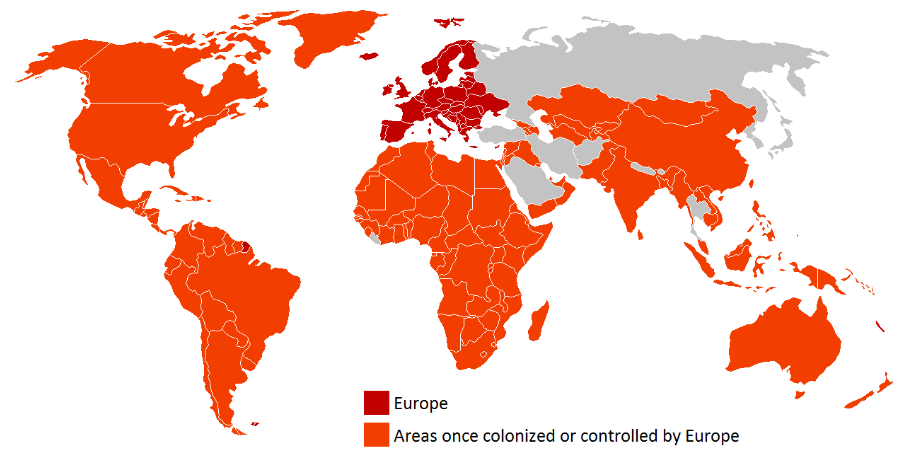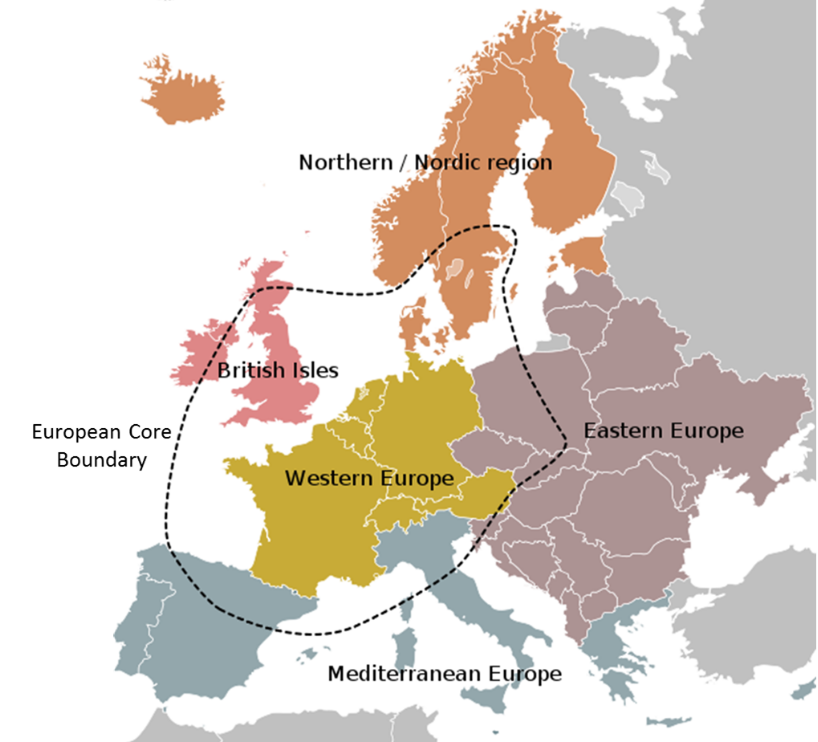2.3: The Industrial Revolution
- Page ID
- 131872
\( \newcommand{\vecs}[1]{\overset { \scriptstyle \rightharpoonup} {\mathbf{#1}} } \)
\( \newcommand{\vecd}[1]{\overset{-\!-\!\rightharpoonup}{\vphantom{a}\smash {#1}}} \)
\( \newcommand{\dsum}{\displaystyle\sum\limits} \)
\( \newcommand{\dint}{\displaystyle\int\limits} \)
\( \newcommand{\dlim}{\displaystyle\lim\limits} \)
\( \newcommand{\id}{\mathrm{id}}\) \( \newcommand{\Span}{\mathrm{span}}\)
( \newcommand{\kernel}{\mathrm{null}\,}\) \( \newcommand{\range}{\mathrm{range}\,}\)
\( \newcommand{\RealPart}{\mathrm{Re}}\) \( \newcommand{\ImaginaryPart}{\mathrm{Im}}\)
\( \newcommand{\Argument}{\mathrm{Arg}}\) \( \newcommand{\norm}[1]{\| #1 \|}\)
\( \newcommand{\inner}[2]{\langle #1, #2 \rangle}\)
\( \newcommand{\Span}{\mathrm{span}}\)
\( \newcommand{\id}{\mathrm{id}}\)
\( \newcommand{\Span}{\mathrm{span}}\)
\( \newcommand{\kernel}{\mathrm{null}\,}\)
\( \newcommand{\range}{\mathrm{range}\,}\)
\( \newcommand{\RealPart}{\mathrm{Re}}\)
\( \newcommand{\ImaginaryPart}{\mathrm{Im}}\)
\( \newcommand{\Argument}{\mathrm{Arg}}\)
\( \newcommand{\norm}[1]{\| #1 \|}\)
\( \newcommand{\inner}[2]{\langle #1, #2 \rangle}\)
\( \newcommand{\Span}{\mathrm{span}}\) \( \newcommand{\AA}{\unicode[.8,0]{x212B}}\)
\( \newcommand{\vectorA}[1]{\vec{#1}} % arrow\)
\( \newcommand{\vectorAt}[1]{\vec{\text{#1}}} % arrow\)
\( \newcommand{\vectorB}[1]{\overset { \scriptstyle \rightharpoonup} {\mathbf{#1}} } \)
\( \newcommand{\vectorC}[1]{\textbf{#1}} \)
\( \newcommand{\vectorD}[1]{\overrightarrow{#1}} \)
\( \newcommand{\vectorDt}[1]{\overrightarrow{\text{#1}}} \)
\( \newcommand{\vectE}[1]{\overset{-\!-\!\rightharpoonup}{\vphantom{a}\smash{\mathbf {#1}}}} \)
\( \newcommand{\vecs}[1]{\overset { \scriptstyle \rightharpoonup} {\mathbf{#1}} } \)
\( \newcommand{\vecd}[1]{\overset{-\!-\!\rightharpoonup}{\vphantom{a}\smash {#1}}} \)
\(\newcommand{\avec}{\mathbf a}\) \(\newcommand{\bvec}{\mathbf b}\) \(\newcommand{\cvec}{\mathbf c}\) \(\newcommand{\dvec}{\mathbf d}\) \(\newcommand{\dtil}{\widetilde{\mathbf d}}\) \(\newcommand{\evec}{\mathbf e}\) \(\newcommand{\fvec}{\mathbf f}\) \(\newcommand{\nvec}{\mathbf n}\) \(\newcommand{\pvec}{\mathbf p}\) \(\newcommand{\qvec}{\mathbf q}\) \(\newcommand{\svec}{\mathbf s}\) \(\newcommand{\tvec}{\mathbf t}\) \(\newcommand{\uvec}{\mathbf u}\) \(\newcommand{\vvec}{\mathbf v}\) \(\newcommand{\wvec}{\mathbf w}\) \(\newcommand{\xvec}{\mathbf x}\) \(\newcommand{\yvec}{\mathbf y}\) \(\newcommand{\zvec}{\mathbf z}\) \(\newcommand{\rvec}{\mathbf r}\) \(\newcommand{\mvec}{\mathbf m}\) \(\newcommand{\zerovec}{\mathbf 0}\) \(\newcommand{\onevec}{\mathbf 1}\) \(\newcommand{\real}{\mathbb R}\) \(\newcommand{\twovec}[2]{\left[\begin{array}{r}#1 \\ #2 \end{array}\right]}\) \(\newcommand{\ctwovec}[2]{\left[\begin{array}{c}#1 \\ #2 \end{array}\right]}\) \(\newcommand{\threevec}[3]{\left[\begin{array}{r}#1 \\ #2 \\ #3 \end{array}\right]}\) \(\newcommand{\cthreevec}[3]{\left[\begin{array}{c}#1 \\ #2 \\ #3 \end{array}\right]}\) \(\newcommand{\fourvec}[4]{\left[\begin{array}{r}#1 \\ #2 \\ #3 \\ #4 \end{array}\right]}\) \(\newcommand{\cfourvec}[4]{\left[\begin{array}{c}#1 \\ #2 \\ #3 \\ #4 \end{array}\right]}\) \(\newcommand{\fivevec}[5]{\left[\begin{array}{r}#1 \\ #2 \\ #3 \\ #4 \\ #5 \\ \end{array}\right]}\) \(\newcommand{\cfivevec}[5]{\left[\begin{array}{c}#1 \\ #2 \\ #3 \\ #4 \\ #5 \\ \end{array}\right]}\) \(\newcommand{\mattwo}[4]{\left[\begin{array}{rr}#1 \amp #2 \\ #3 \amp #4 \\ \end{array}\right]}\) \(\newcommand{\laspan}[1]{\text{Span}\{#1\}}\) \(\newcommand{\bcal}{\cal B}\) \(\newcommand{\ccal}{\cal C}\) \(\newcommand{\scal}{\cal S}\) \(\newcommand{\wcal}{\cal W}\) \(\newcommand{\ecal}{\cal E}\) \(\newcommand{\coords}[2]{\left\{#1\right\}_{#2}}\) \(\newcommand{\gray}[1]{\color{gray}{#1}}\) \(\newcommand{\lgray}[1]{\color{lightgray}{#1}}\) \(\newcommand{\rank}{\operatorname{rank}}\) \(\newcommand{\row}{\text{Row}}\) \(\newcommand{\col}{\text{Col}}\) \(\renewcommand{\row}{\text{Row}}\) \(\newcommand{\nul}{\text{Nul}}\) \(\newcommand{\var}{\text{Var}}\) \(\newcommand{\corr}{\text{corr}}\) \(\newcommand{\len}[1]{\left|#1\right|}\) \(\newcommand{\bbar}{\overline{\bvec}}\) \(\newcommand{\bhat}{\widehat{\bvec}}\) \(\newcommand{\bperp}{\bvec^\perp}\) \(\newcommand{\xhat}{\widehat{\xvec}}\) \(\newcommand{\vhat}{\widehat{\vvec}}\) \(\newcommand{\uhat}{\widehat{\uvec}}\) \(\newcommand{\what}{\widehat{\wvec}}\) \(\newcommand{\Sighat}{\widehat{\Sigma}}\) \(\newcommand{\lt}{<}\) \(\newcommand{\gt}{>}\) \(\newcommand{\amp}{&}\) \(\definecolor{fillinmathshade}{gray}{0.9}\)In Europe, levels of development have largely been shaped by the Industrial Revolution. The Industrial Revolution refers to the changes in manufacturing that occurred in the late 18th and early 19th centuries. These changes had profound effects on society, economics, and agriculture, not just in Europe, but globally.
Prior to the Industrial Revolution, most goods in Europe were produced in the home. These so-called “cottage” industries consisted of individual workers making unique goods in their homes, usually on a part-time basis. These products, such as clothing, candles, or small housewares, could be sold by a farming family to supplement their income.
The Industrial Revolution began in the United Kingdom. While it’s difficult to pinpoint the exact point at which the revolution began, a key invention was James Watt’s steam engine, which entered production in 1775. This steam-driven engine was adopted by industries to allow for factory production. Machines could now be used instead of human or animal labor. Interestingly, a side effect of the steam engine was that it enabled better iron production, since iron required an even and steady stream of heat. This improved iron was then used to build more efficient steam engines, which in turn produced increasingly better iron. These improvements and new technologies gradually spread across Europe, eventually diffusing to the United States and Japan.
During this time, there were also significant changes in agricultural production. The Agrarian Revolution began in the mid-1750s and was based upon a number of agricultural innovations. The Age of Enlightenment and scientific reasoning championed the growing of crops. Farmers began using mechanized equipment, rather than relying solely on human or animal labor. Fertilizers improved soil conditions, and crop rotation and complementary planting further increased crop yields. During this time period, there was a shift to commercial agriculture, where excess crops are sold for a profit, rather than subsistence agriculture, where farmers primarily grow food for their own family’s consumption.
Improvements in rail transportation changed both the way goods were distributed across Europe and the movement of people across the region. The use of steam engines and improved iron also transformed the shipping industry, with steamships beginning to set sail across the Atlantic Ocean.
The Agrarian Revolution coupled with the Industrial Revolution profoundly changed European geography. Farmers could produce more with less work, which created an agricultural surplus and enabled a sustained population increase. Port cities and capital cities became centers of trade and expanded. Critically, the Agrarian Revolution freed workers from having to farm, since fewer farmers were needed to produce the same amount of crops. As such, people were able to find work in the factories. These factories were primarily located in cities, which dramatically increased urbanization in Europe. At the start of the 19th century, around 17 percent of England’s population lived in cities; by the end of the 19th century, that figure had risen to 54 percent.
Overall, the Industrial Revolution considerably improved European power by boosting their economies, improving their military technology, and increasing their transportation efficiency. Even before the Industrial Revolution, Europe exerted a considerable amount of control over the rest of the world. European colonialism began in the 1400s, led by Portugal and Spain. In the 1500s, England, France, and the Dutch began their own colonial campaigns. By the start of World War I, the British Empire, boosted by the improvements of the Industrial Revolution, had the largest empire in history, covering 20 percent of the world’s population at the time (Figure \(\PageIndex{1}\)).

Coinciding with the Industrial and Agrarian Revolutions were a number of political revolutions in Europe. The most influential political change came as the result of the French Revolution, which occurred between 1789 and 1799 CE. This revolution ended France’s monarchy, established a republic, and provided the foundation for numerous political revolutions that followed. It also weakened the power of the Roman Catholic Church in France, inspiring the modern-day separation between church and state that is typical of many Western countries, including the United States.
Today, the map of Europe reflects the changes brought about by the Industrial and Agrarian Revolutions as well as the political changes that took place throughout the time period. Europe’s core area, where economic output is highest, is largely centered around the manufacturing areas that arose during the Industrial Revolution (Figure \(\PageIndex{2}\)). These manufacturing areas in turn were originally located near the raw materials, such as coal, that could sustain industrial growth.

The shift in labor that occurred during the Industrial Revolution, as people left rural farms to find work in factories, led to the specialization of labor that is found in Europe today. Areas within Europe tended to specialize in the production of particular goods. For example, Northern Italy has maintained a specialty in the production of textiles. Germany continues to specialize in automotive manufacturing. The Benz Patent-Motorwagen, the world’s first gasoline-powered automobile, was first built in Germany in 1886 and would later develop into the Mercedes-Benz corporation.
As regions focused on the manufacture of particular goods, they benefited from economies of scale, the savings in cost per unit that results from increasing production. If you wanted to build a chair, you’d have to buy the wood, glue, and screws as well as the tools needed to construct it, such as a drill, sander, and saw. That single chair would be quite costly to produce. If you wanted to make ten chairs, however, those same tools could be used for every chair, driving the cost of each chair down. Many areas in Europe have shifted from more traditional to high-tech manufacturing and industrial output in the region remains high.
- Industrial Revolution:
-
the changes in manufacturing that began in the United Kingdom in the late 18th and early 19th centuries
- Economies of scale:
-
the savings in cost per unit that results from increasing production

